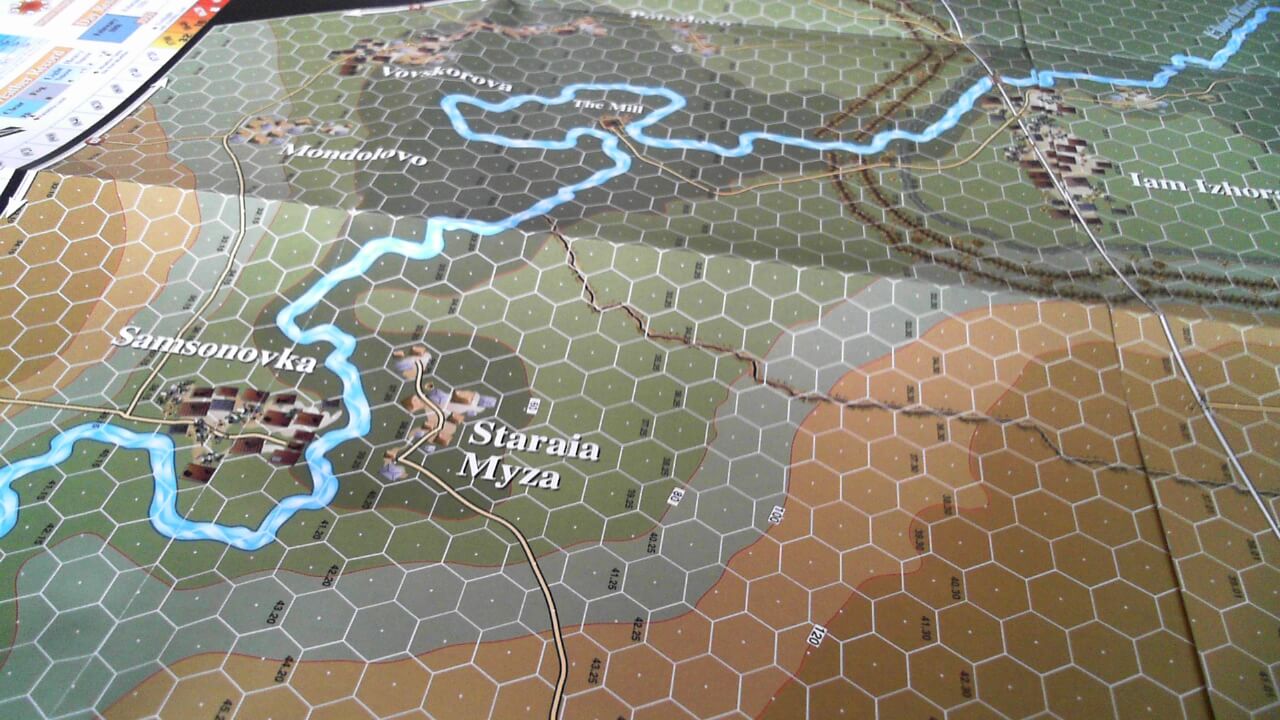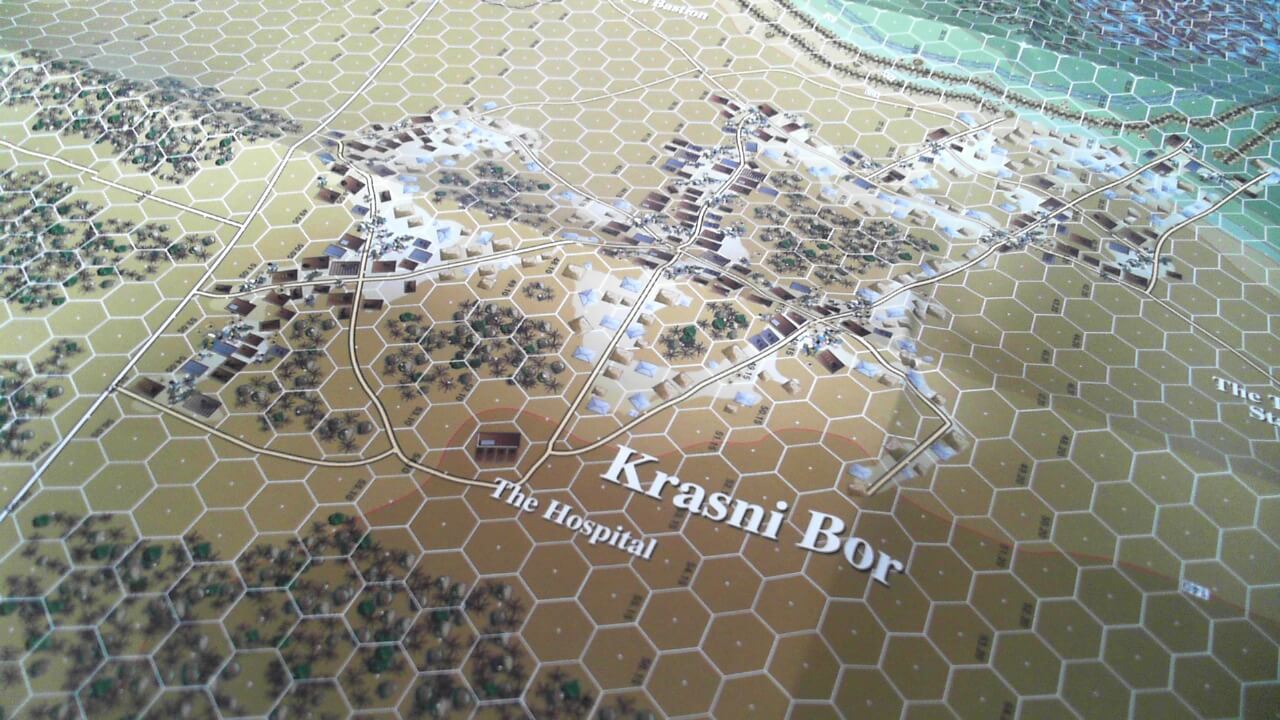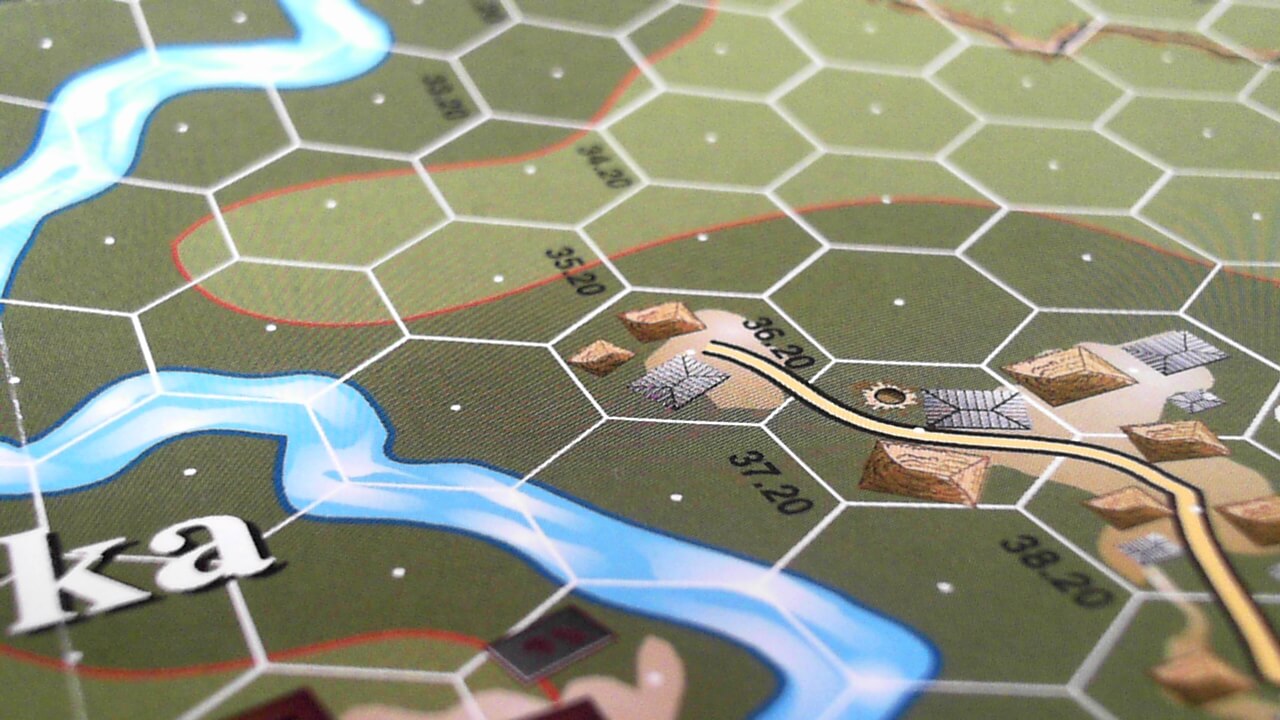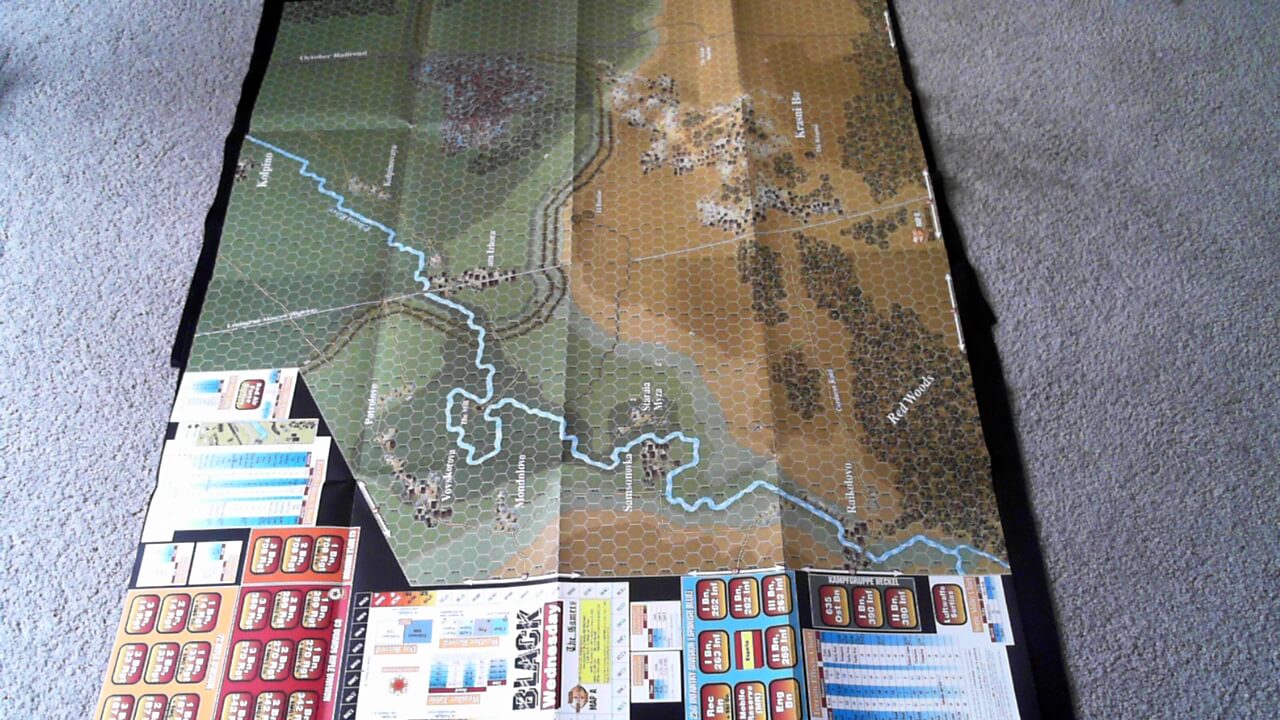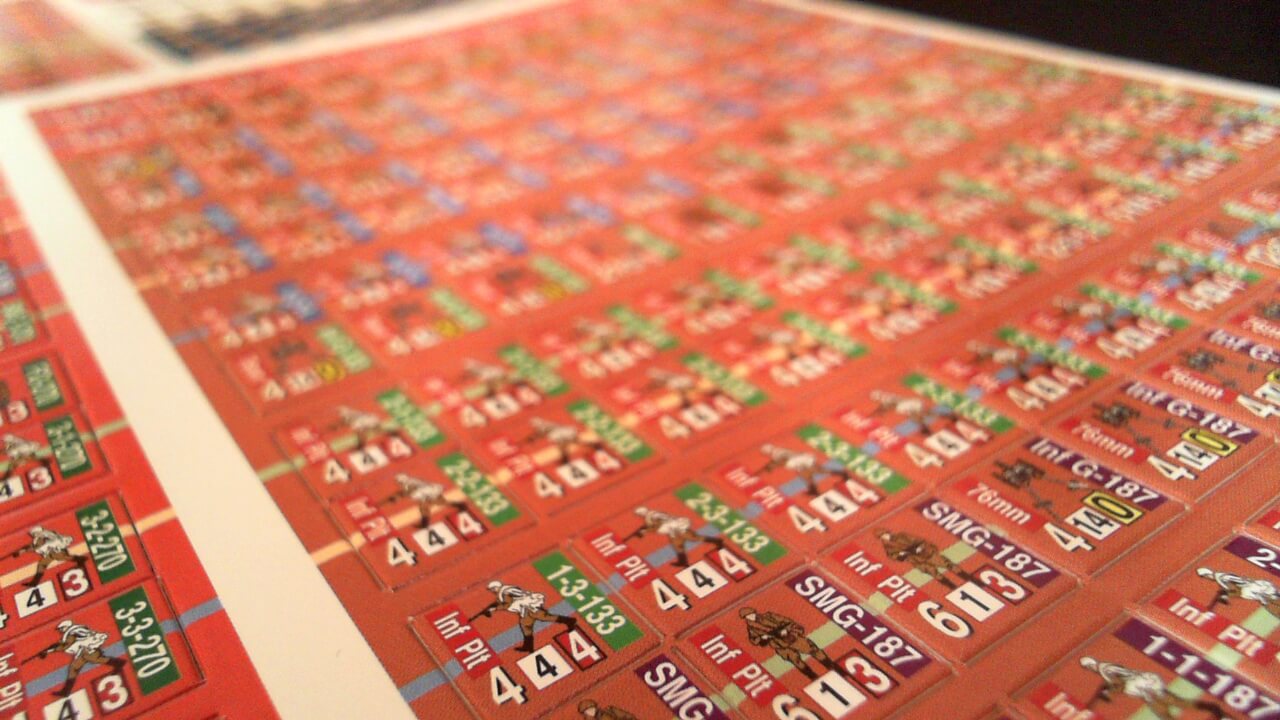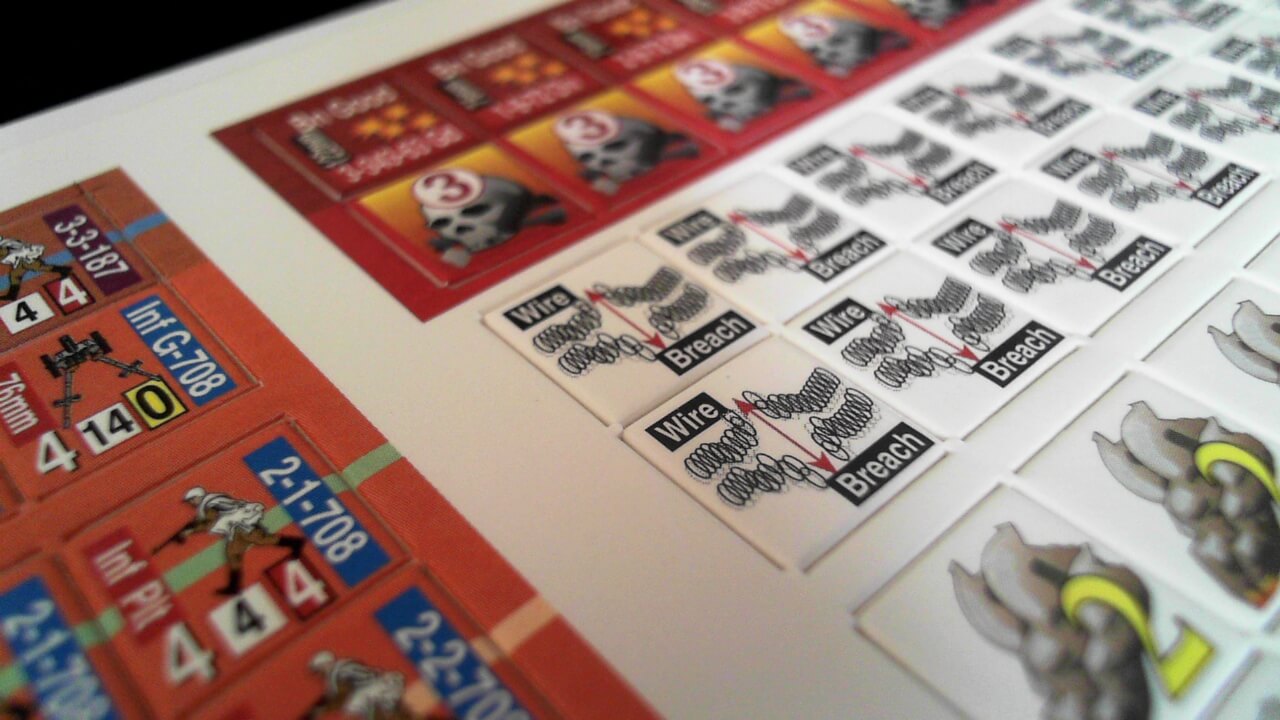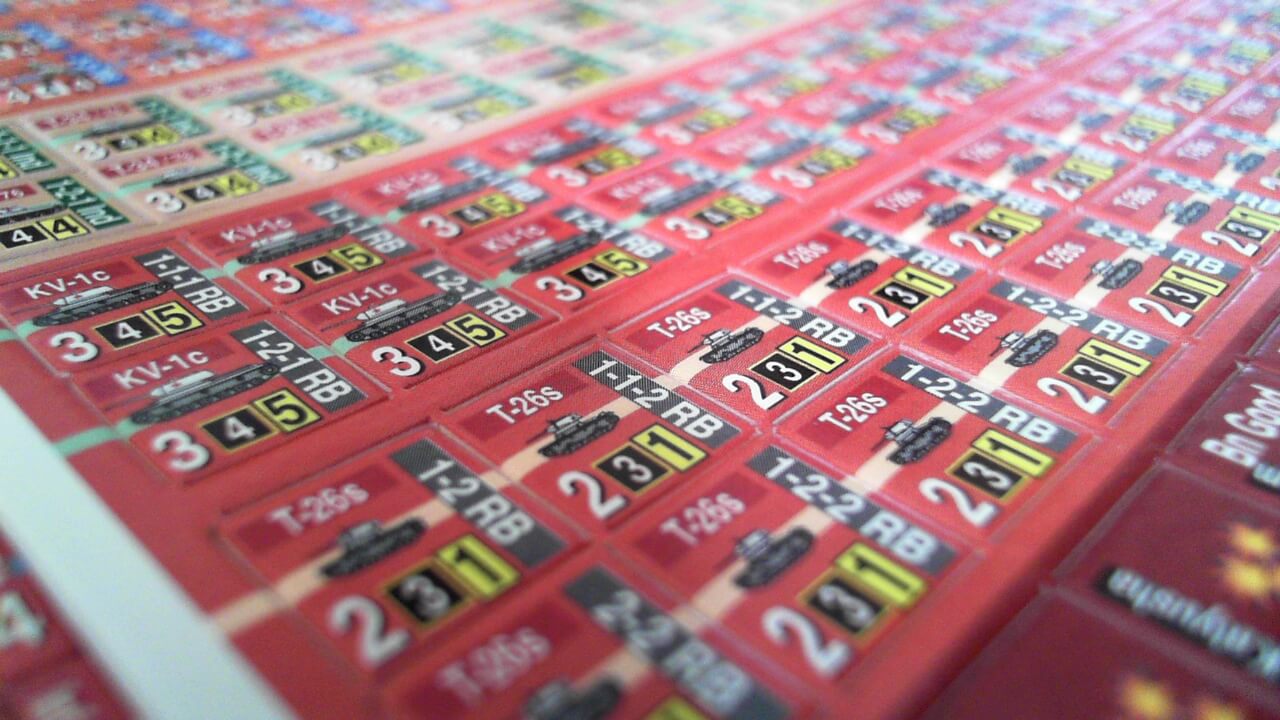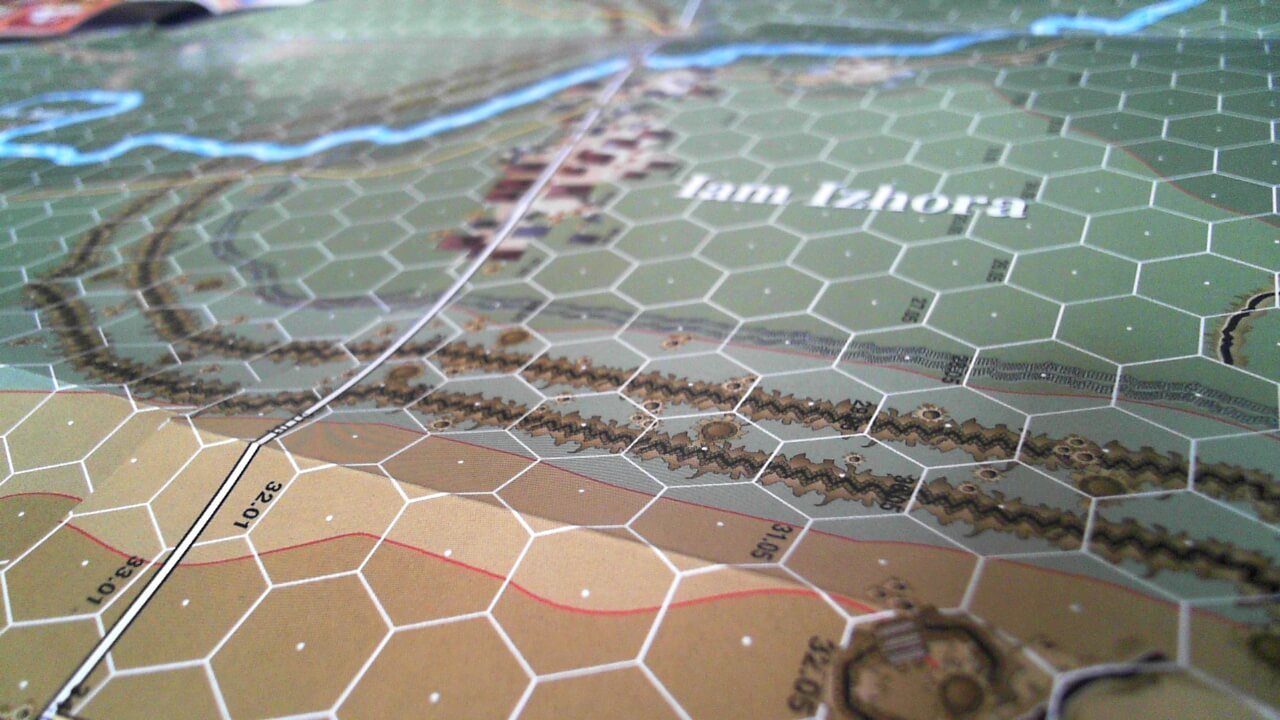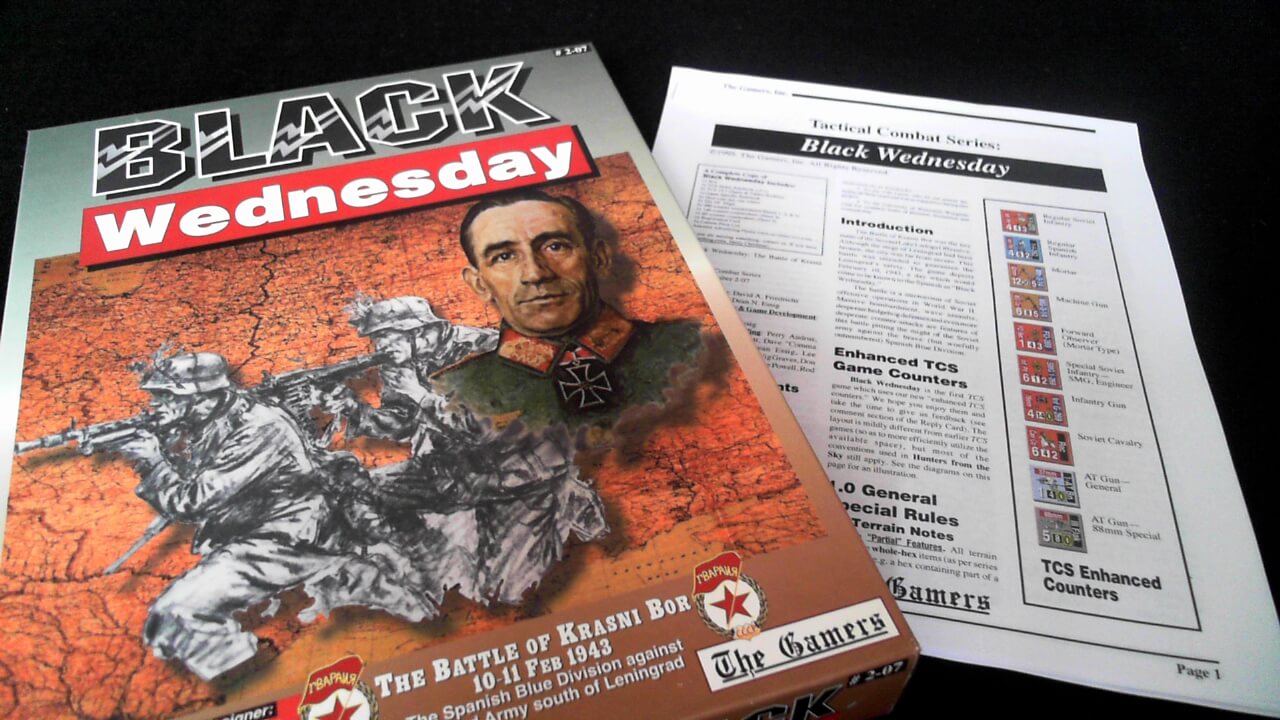
The Battle of Krasni Bor was the key battle of the Second Lake Ladoga Offensive. Although the siege of Leningrad had been broken, the city was far from secure. This battle was intended to guarantee the Leningrad’s safety. The game depicts February 10, 1943, a day which would come to be known to the Spanish as “Black Wednesday.”

The battle is a microcosm of Soviet offensive operations in World War II. Massive bombardment, wave assaults, desperate hedgehog defenses and even more desperate counter-attacks are features of this battle pitting the might of the Soviet army against the brave (but woefully outnumbered) Spanish Blue Division.

The Soviets believing the Germans could attack and close their land link to Leningrad at any time, the Soviets developed a plan to enlarge the gap. The German held Sinyavino Heights which were the key to the area, but the position was held despite tremendous and bloody frontal attacks. The offensive continued with this phase directed at the capture of Mga, the critical supply head for supporting the heights. The attack would be a repeat of the previous battle but on a wider axis. The western arm of the attack centered at Krasni Bor.
The Spanish defensive works at Krasni Bor were inherited from the 121st Infantry. The positions were much to the disliking of the Spanish. In typical pre-1943 practice, the Germans had erected a thin continuous line of works, well protected by wire entanglements. However, the position lacked depth and mines. From their experience in the Spanish Civil War, most of the members of division preferred a series of strong points with interlocking support fire. However, little could be done to improve the line.

On the morning of February 10, 1943, 400 guns opened up on the right wing of the Blue Division. Three Soviet divisions (72nd and 43rd Rifle and 63rd Guard), supported by 60 tanks, moved out of their trenches and advanced on 262 Regiment.
The artillery hit along the line and in Krasni Bor; the concentrations on 1-I-262, 6-II-262 and 2-Mobile Reserve were particularly heavy. By 0800, the artillery began shifting into Krasni Bor and behind the Spanish positions. The Soviet infantry hit the lines on the heels of the artillery.
The 43rd Rifle hit I-262 Battalion’s 1 and 3 Company. The division Ski Company was dispatched to assist the beleaguered companies but was wiped out by an air attack. The initial attacks were repulsed but by 0845, 1-I-262 was wiped out along with the battalion HQ, 2-I-262 was taking shelter in the woods to the east and 3-1-262 was hanging on to their trenches in the swamp, repulsing two more attacks.
On the Spanish left, the 2-MR was reeling from the heavy artillery pounding when elements of 72nd Rifle poured out of Iam Izhora, and into their lines. They were overrun by 0845.
In the center, elements of 63rd Guard were advancing across the peat bog into the woods in front of Krasni Bor. The artillery bombardment had shattered 6-II-262. After the first assault into the line at 0900, the company was destroyed and 5-II-262 on the right was down to 30 men. The guardsmen poured through the hole into Krasni Bor.
By 0900, the last of the artillery lifted and the Spanish began to react. On the right, I-262 (except for 3 Company) was out of the battle. 3-Recon was ordered to move up the east side of the railroad to stop the Soviet tide.
In the center, 7-II-262 withdrew to El Bastion in the center, bolstering the defense of the left shoulder of the 63rd Guard breakthrough. The remnants of 5-II-262 withdraw to help in holding the right shoulder of the breakthrough. The point of the guard’s attack was blunted as it reaches the positions of II-262 HQ. 2-Recon company was dispatched to shore up the battalion HQ’s defense.
On the Spanish left, Soviet armor, supported by artillery, advanced through the hole left by the destruction of 2-MR company and engaged the MR HQ. This left 3-MR cut-off but still holding its positions opposite Iam Izhora.
By 1000 hours, the battle had degenerated into assaults on isolated pockets by disorganized attackers. The Spanish were beginning to recover from their initial shock and the Soviets’ initial assault was waning. Pockets of resistance still holding out included 3-I-262, El Bastion, and 3-MR. Meanwhile, a second line was forming up in Krasni Bor centered on II-262 HQ, now bolstered by 2-Recon.
By 1030 hours, the defense in Krasni Bor was weakening, II-262 HQ was overrun.

The Engineer Battalion was ordered to counter-attack. This move hit the pursuing guardsmen with such force that they retreated almost immediately. For the next two hours, the attack see-sawed back and forth through the streets of the town.
By noon, there was still no sign of German support, despite the fact that at 0720, KG Heckel (215th Infantry) had been ordered to the battle. Heckel’s troops were stationed at Sablino, less than 10 kilometers from Krasni Bor. Meanwhile, the Soviets, at least those not immediately endangered by Spanish fire, took to looting their enemy’s bunkers. Control of the battle was lost from both sides.
The Spanish regained their balance first. By 1330 hours, a line began to form as divisional reserves arrived. I-263 began moving up either side of the Izhora to counter Soviet advances toward Staraia Myza. 5-II-263 arrived to prepare to defend Raikolovo.
The Soviets also regained their composure and lunged forward. By 1430 hours, the positions held by 3-I-262 were overrun. The mill was heavily engaged and but for the defensive fire from Battery 7, would have fallen. 72nd Rifle also drove south toward Staraia Myza and hit I-263 coming from Raikolovo. After an hour long firefight, the Spanish withdrew to Samsonovka and the Soviets to Staraia Myza.
As the afternoon turned to night, the Soviet attacks on the pockets waned. One by one, the isolated pockets of Spanish defenders slipped away into the night. 3- MR, still holding its line in the trenches, was the first to withdraw. The men of Battery 3 in Krasni Bor used their last rounds of ammunition to destroy their guns. By 2300 hours, 3-Engineer and 7-II-262 had also abandoned their perimeters and formed up with the remnants of the regiment along the woods south of Krasni Bor.

At midnight, German artillery began its harassing fire on Krasni Bor. Amid the exploding shells, the last of the Spanish defenders (1 Battery), destroyed their guns and withdrew. German troops were finally moving into the area to bolster the defense but the town was now in Soviet hands.
The next morning the combatants facing each other were shells of what they had been at the beginning of the previous day. The Soviets made a feeble attempt to attack Samsonovka but were bloodily repulsed when the Spanish counter- attacked. The counter-attack briefly retook Staraia Myza, but this too was reversed by day’s end. The Germans were content with lobbing a few shells into Krasni Bor and waiting for reinforcements. The battle ended.
The Soviets had lost between 7, 000 and 11, 000 men (depending on the source), the Spanish approximately 2, 200. Losses such as these, in a one day battle, in such a confined area, are nearly unheard of in World War II.
The Soviets had gained the burnt-out shell of a town and a few kilometers of trenches. On the eastern side of the cordon, the Soviet attack was met by 96th Infantry, supported by 61th and 132nd Infantry. Although the fighting was savage, the Soviets were repulsed. A final attempt to take Mga was made a month later, with the attacks coming further north. This too was savagely defeated. The second Lake Ladoga offensive had ended.
